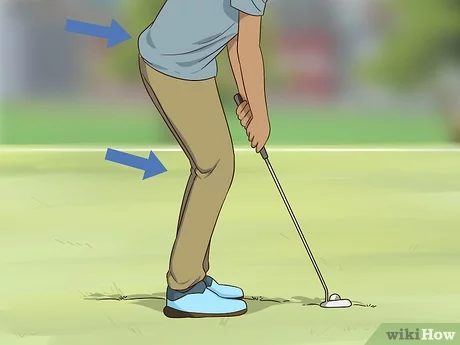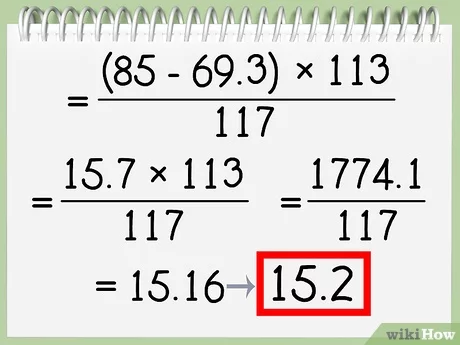Playing golf can be both fun and challenging. It combines skill, strategy, and patience.
Golf is a beloved sport enjoyed by millions worldwide. It offers a unique blend of mental and physical challenges. Whether you are stepping onto the green for the first time or looking to improve your game, understanding the basics is crucial.
Golf involves more than just hitting a ball; it requires technique, practice, and understanding the rules. This guide will help you learn how to play golf, covering essential tips and techniques. By the end, you’ll feel more confident and ready to enjoy this wonderful sport. Let’s dive into the world of golf and discover how to get started.
Introduction To Golf
Golf is a sport enjoyed by millions worldwide. It combines physical skill with mental strategy. Whether you’re young or old, golf offers a unique challenge and a relaxing pastime. This guide will help you understand the basics of golf.
Brief History
Golf originated in Scotland in the 15th century. It quickly grew in popularity. By the 18th century, golf had spread to England and beyond. The first golf club, The Honourable Company of Edinburgh Golfers, was formed in 1744. Golf courses began to appear in many countries. Today, golf is played globally, with professional tournaments attracting huge audiences.
Why Play Golf
Golf offers many benefits. It is a low-impact sport, making it accessible to people of all ages. Walking the course provides good exercise. Golf also improves mental focus and strategic thinking. It is a social sport, perfect for spending time with friends or family. Playing golf can also be a way to enjoy beautiful outdoor settings.

Credit: www.youtube.com
Essential Equipment
Playing golf requires the right equipment. Knowing what you need is essential. Here, we will cover the essential equipment you need to play golf. This includes clubs, balls, clothing, and accessories. Each item plays a crucial role in the game.
Clubs
Golf clubs are the most important gear. You need different clubs for various shots. There are three main types: woods, irons, and putters. Woods are used for long-distance shots. Irons are for mid-range shots. Putters help you finish the hole. A typical golf bag contains 14 clubs.
- Driver: For teeing off and long-distance shots.
- Fairway Woods: For long shots from the fairway.
- Irons: For a variety of shots, especially mid-range.
- Wedges: For short, high shots and getting out of sand traps.
- Putter: For putting the ball into the hole.
Balls
Golf balls come in various types. Choose based on your skill level and needs. Beginners should use two-piece balls. They offer distance and durability. Advanced players might prefer multi-layer balls. These provide better control and spin.
Golf balls have different compressions. A low compression ball is softer. It suits players with a slower swing speed. A high compression ball is harder. It suits players with a faster swing speed.
Clothing And Accessories
Proper clothing is essential in golf. Wear a collared shirt and golf pants or shorts. Avoid jeans and T-shirts. Choose clothing made of breathable materials. This helps keep you cool and comfortable.
Golf shoes are also important. They provide grip and stability. Look for shoes with soft spikes. They are more course-friendly than metal spikes.
Accessories include gloves, hats, and sunglasses. A glove improves your grip. Hats and sunglasses protect you from the sun. You might also need a golf bag to carry your clubs and other gear.
Basic Rules And Etiquette
Golf is a game of skill, patience, and precision. Understanding the basic rules and etiquette is essential for anyone stepping onto the course. Proper knowledge ensures a smooth and enjoyable experience for all players.
Rules Of The Game
Golf has a set of rules that players must follow. These rules are designed to ensure fairness and consistency.
- Play the ball as it lies: Do not move or touch the ball unless allowed by the rules.
- Count every stroke: Keep an honest count of all strokes taken.
- Penalties: Be aware of penalties for certain actions, such as hitting the ball out of bounds.
- Teeing ground: Tee off between the markers and no further than two club lengths behind them.
- Putting green: Do not step on the line of another player’s putt.
Golf Course Etiquette
Etiquette in golf is just as important as the rules. It ensures a respectful and enjoyable game for everyone.
- Respect others: Always be quiet and still when others are hitting.
- Maintain pace: Keep up with the group ahead to avoid slow play.
- Repair the course: Fix divots and ball marks to keep the course in good condition.
- Dress code: Wear appropriate golf attire as per the club’s guidelines.
- Safety first: Make sure no one is in the way before you swing.
| Rule | Description |
|---|---|
| Play the ball as it lies | Do not move or touch the ball unless allowed. |
| Count every stroke | Keep an honest count of all strokes. |
| Penalties | Be aware of penalties for certain actions. |
| Teeing ground | Tee off between the markers. |
| Putting green | Do not step on another player’s line. |
Fundamentals Of A Golf Swing
Understanding the fundamentals of a golf swing is crucial for any golfer. These basics form the foundation of every successful shot. Mastering the grip, stance, and swing mechanics ensures consistency and accuracy. Let’s delve into these essential components.
Grip
The grip is where it all starts. A proper grip influences your control over the club. There are three main types of grips: the overlapping grip, the interlocking grip, and the ten-finger grip. Choose the one that feels most comfortable. Hold the club with a firm but relaxed grip. Ensure your hands work together as a single unit. This unity helps in maintaining control and precision.
Stance
Your stance sets the foundation for a balanced swing. Stand with your feet shoulder-width apart. Align your body with the target line. Slightly bend your knees and keep your weight evenly distributed. Your back should be straight, and your arms should hang naturally. This posture promotes stability and smooth movement.
Swing Mechanics
Swing mechanics involve the actual motion of hitting the ball. Start with a slow backswing, bringing the club back in a smooth motion. Rotate your shoulders and hips while keeping your head steady. At the top of the backswing, pause briefly. Begin the downswing by shifting your weight to your front foot. Swing the club down, maintaining a fluid motion. Follow through completely after hitting the ball. This full motion ensures maximum power and accuracy.
Improving Your Short Game
Improving your short game is crucial in golf. It can dramatically lower your scores. The short game includes chipping and putting. These skills require practice and patience. Mastering these techniques will help you save strokes around the green.
Chipping Techniques
Chipping is an essential skill in golf. Use a narrow stance for better control. Keep your weight on your front foot. This helps maintain a steady swing. Focus on making a smooth, controlled motion. Use a short backswing and follow through. The goal is to make clean contact with the ball.
Choose the right club for each shot. A wedge works well for high, soft shots. A 7 or 8-iron is good for low, running chips. Experiment with different clubs during practice. Find what works best for you. Remember, practice makes perfect.
Putting Tips
Good putting can make or break your game. Start by reading the green. Look for slopes and grain direction. These factors affect the ball’s path. Take your time to line up the putt. Visualize the ball rolling into the hole.
Adopt a comfortable stance. Keep your feet shoulder-width apart. Hold the putter with a light grip. This allows for a smooth stroke. Focus on a steady backswing and follow through. Keep your head still and eyes on the ball. Consistency is key in putting.
Practice different lengths of putts. Work on short, medium, and long putts. Develop a routine for each putt. This helps build confidence on the green. Remember, a good putt starts with a solid routine.

Credit: www.wikihow.com
Course Management Strategies
Learning effective course management strategies can significantly improve your golf game. Understanding the course, selecting the right club, and making smart decisions are crucial. Below, we delve into two key aspects: Reading the Course and Club Selection.
Reading The Course
Before hitting the ball, take a moment to read the course. Observe the layout, noting hazards and slopes. Pay attention to the wind direction and speed. Walk around the green to understand its contours. This will help you plan your shots more effectively.
Consider the following tips:
- Identify hazards like bunkers and water bodies.
- Note the distance to the green from various points.
- Check the wind direction with a simple grass toss.
- Assess the slope and grain of the greens.
Reading the course accurately can make a significant difference in your performance.
Club Selection
Choosing the right club is another critical aspect of course management. Different clubs offer varying distances and trajectories. Knowing which one to use can greatly affect your shot’s outcome.
Here are some guidelines:
- Use a driver for long-distance shots from the tee.
- Opt for irons when aiming for precision and control.
- Choose wedges for short-distance shots and getting out of bunkers.
- Select a putter for close-range shots on the green.
Avoid using the same club for every shot. Assess the situation and choose the best club accordingly.
By mastering these course management strategies, you can play smarter and improve your golf game. Remember to take your time, observe, and make informed decisions.
Practicing Effectively
Practicing effectively is crucial for improving your golf game. Focused practice helps you develop consistency and accuracy. By incorporating specific drills and using the driving range properly, you can enhance your skills. Let’s dive into some practical tips.
Practice Drills
Incorporate practice drills into your routine to target specific areas of your game. Here are a few drills to try:
- Putting Drill: Place several balls around the hole. Practice making short putts from different angles.
- Chipping Drill: Set up targets at varying distances. Practice chipping balls to these targets.
- Alignment Drill: Use alignment sticks to ensure your body and club are correctly aligned.
Using The Driving Range
Using the driving range effectively can significantly improve your swing and overall game. Follow these tips for an efficient practice session:
- Warm-up: Start with stretches to loosen your muscles.
- Begin with Short Irons: Hit a few balls with your short irons to get into rhythm.
- Work Through Your Bag: Gradually move to your mid and long irons, then your woods.
- Focus on Accuracy: Aim at specific targets rather than hitting balls randomly.
- Analyze Your Shots: Pay attention to ball flight and adjust your technique accordingly.
By following these tips and integrating them into your practice routine, you’ll see improvements in your golf game. Consistency and focused practice are key to becoming a better golfer.
Mental Aspects Of Golf
Golf is not just a physical game. The mental aspects are equally important. Many golfers find that their mind can either make or break their game. Mastering the mental side of golf can help you stay calm, focused, and confident on the course.
Staying Focused
Staying focused is key to playing well. Distractions are everywhere on a golf course. The wind, other players, and even your own thoughts can get in the way. Here are some tips to help you stay focused:
- Set small goals: Focus on one shot at a time.
- Breathe deeply: Deep breaths can calm your mind.
- Visualize success: Picture your shot going exactly where you want it to.
By breaking the game into smaller tasks, you can stay in the moment. This helps maintain focus and improve performance.
Dealing With Pressure
Pressure situations are part of golf. Knowing how to deal with them is crucial. Here are some strategies:
- Practice under pressure: Simulate high-pressure situations during practice.
- Stay positive: Keep your thoughts positive and encouraging.
- Focus on the process: Concentrate on your routine, not the outcome.
Pressure can cause mistakes, but it also presents opportunities. With the right mindset, you can turn pressure into a positive force.
In summary, the mental aspects of golf are vital for success. By staying focused and dealing with pressure effectively, you can improve your game significantly.
Joining A Golf Community
Joining a golf community can enrich your golfing experience. Being part of a group gives you access to resources, support, and camaraderie. It helps you improve your skills and enjoy the game more.
Golf Clubs And Associations
Golf clubs are great places to meet fellow golfers. You can join local or regional clubs. These clubs often offer regular events and social gatherings. They provide a structured environment to hone your skills.
Associations also play a key role in the golf community. They organize tournaments and provide valuable information. You can find golf associations at various levels. From local to national, each has its unique benefits.
Participating In Tournaments
Tournaments are an exciting part of golfing. They give you a chance to test your skills. You can start with local tournaments. As you gain experience, you can join larger events.
Playing in tournaments helps you learn from others. You can observe different playing styles and strategies. It’s also a great way to meet new friends and expand your network.

Credit: www.youtube.com
Frequently Asked Questions
What Are The Basic Rules Of Golf?
Golf involves hitting a ball into a series of holes with the fewest strokes. It requires understanding terms like par, birdie, and bogey. Players must follow etiquette like repairing divots and keeping pace.
How Do I Choose The Right Golf Club?
Choosing the right golf club depends on the distance and type of shot. Beginners should start with a set of basic clubs. Consult with a professional for personalized advice.
What Should I Wear To Play Golf?
Golf attire usually includes a collared shirt, comfortable pants or shorts, and golf shoes. Some courses have specific dress codes, so it’s best to check in advance.
How Can I Improve My Golf Swing?
Improving your golf swing requires practice, proper grip, stance, and alignment. Consider taking lessons from a professional coach to get personalized tips and feedback.
Conclusion
Golf is a rewarding sport. Practice regularly to improve your skills. Enjoy the game with friends and family. Remember to stay patient and have fun. Follow these tips to become better. Keep learning and stay passionate. Golf can be a lifelong hobby.
Enjoy every swing and every round. Happy golfing!



